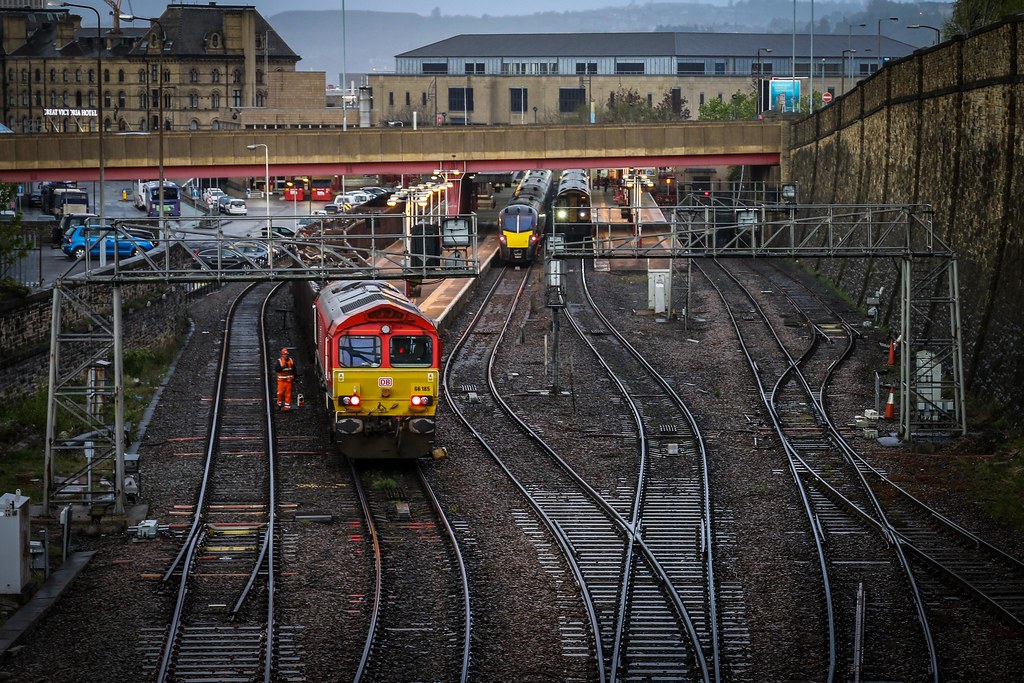But you described that up-thread as where a loco
pushes (shoves, as you put it) vehicles to get them rolling, then drops back from them.
The 'Penzance' situation we're talking about is where the loco
pulls the vehicles to get them rolling, then has to pull ahead of the them so it can be diverted onto a different track from the one they are about to take.
After some searching, I found the Americans use the term 'flying switch' (switching = shunting) for the pull-ahead technique (which is now banned by Federal rules), and 'kicking cars' for the push and let roll technique (which I think is also not generally allowed outside of the more 'controlled' environment of yards and the like).
Off-topic, but many years ago (with a group of other enthusiasts from the UK), I had a tour around a major hump sorting yard in Chicago - fascinating place. After we arrived and were standing around in the parking lot taking in the constant 'squealing flanges, clashing couplings and roaring diesels' atmosphere of the place, a local railfan who was with us surveyed our group and said "you lot are like kids in the candy store" - he wasn't wrong

(It was the Belt Railway of Chicago 'Clearing Yard' complex, which is 5.5 miles long with separate east and westbound humps, has 250 miles of track, and handles thousands of freight cars every day. No surprise it generates a lot of noise...)


 ttld cover
ttld cover ttld page 2
ttld page 2